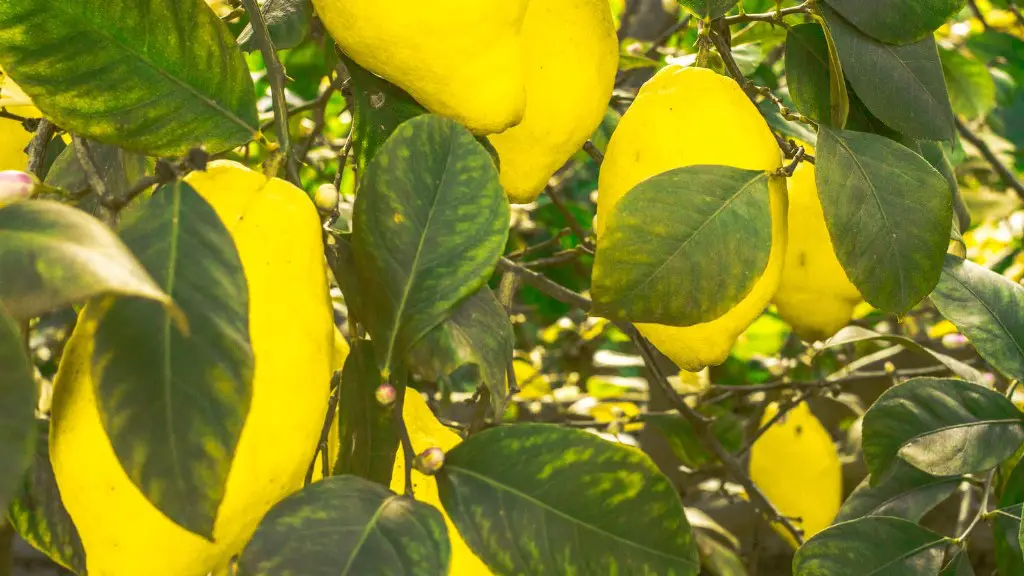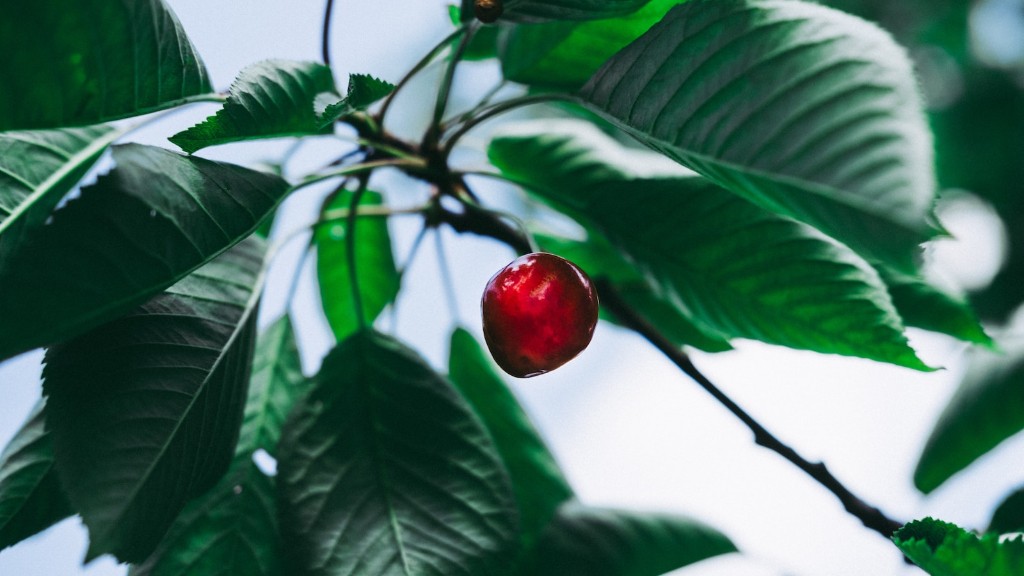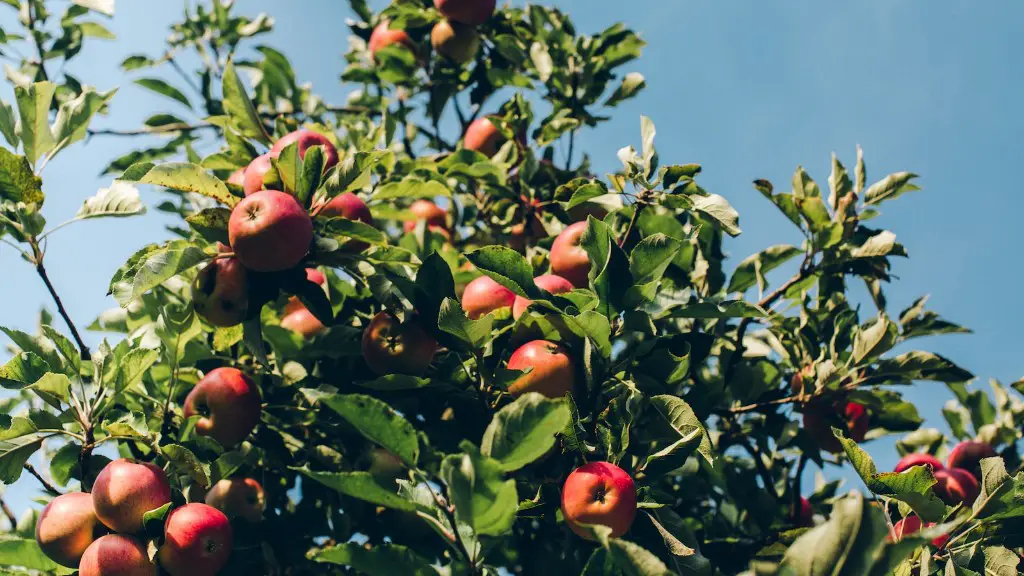Growing a lemon tree has many benefits – You can enjoy the taste of fresh lemons, and you get to spend time outdoors in the sun cultivating your citrus tree. However, taking care of a lemon tree can seem daunting. In this guide, you’ll learn how to make your tree grow faster and healthier.
First, make sure you’re using the right soil for your lemon tree. Citrus trees prefer soil that is fast-draining, yet provides enough moisture and nutrients to keep the tree from drying out. If the soil is too heavy with clay and doesn’t have adequate drainage, your tree will be susceptible to root rot.
Next, keep your lemon tree in an area that gets a lot of sunshine. Lemons require at least eight hours of direct sunlight each day for optimal growth and fruit production. In addition, be sure to maintain good air circulation around the tree by pruning and cutting back overcrowded or shaded branches.
Third, fertilize your lemon tree twice a year – once in the spring and again in the fall. Choose a fertilizer that has a balanced ratio of nitrogen, phosphorus and potassium, and always fertilize the soil around the tree, not the leaves. If your tree is in a container, you should use a fertilizer specifically designed for potted plants.
Fourth, water your lemon tree regularly. Citrus trees need about an inch of water per week, though this may vary depending on your soil type and climate. Avoid over-watering, as this can cause root rot or other soil-related diseases. You should also make sure your lemon tree is mulched with wood chips, pine needles or leaf litter so that the soil retains moisture better.
Finally, it’s important to prune your tree to encourage new growth. Pruning your tree will help to keep it healthy and eliminate any dead or diseased branches. Prune during the dormant season, which is usually in late fall or winter. Pruning helps to promote a sturdier tree structure and allows the tree to direct energy towards producing fruit.
Feeding your Lemon Tree Properly
Feeding your lemon tree is essential for it to grow stronger and produce a bountiful harvest. Proper feeding is all about providing the right nutrients at the exact time of year when the tree requires them most. The basic elements for quick growth and abundant fruiting for a lemon tree are nitrogen, phosphorous and potassium.
Nitrogen is beneficial to growth and production of healthy foliage and green leaves. An all-purpose citrus tree fertilizer with high nitrogen levels is perfect for this purpose. Potassium also is necessary and helps encourage a heavy crop of fruit. A potassium rich fertilizer will provide the tree what’s needed in this area, while preventing yellowing leaves or other deficiencies.
Finally, phosphorous promotes strong root and shoot growth and, again, a gradual release fertilizer can be applied to the soil near the base of the lemon tree. This helps act as a slow-release and means the tree doesn’t need to be fed too frequently.
Keeping a Regular Fertilization Schedule
Fertilizing your tree with the correct nutrients is essential for a healthy and productive citrus tree. It’s also important to maintain a regular fertilizing schedule to ensure the lemon tree is receiving the food it needs for vigorous and sustained growth. For example, an all-purpose fertilizer should be given to the tree during its flowering period, which usually runs from the beginning to the middle of March.
Then in the summer months, when the lemon tree is in bloom and producing fruit, the growth should be encouraged with more nitrogen and phosphorous enriched nutrient application. Finally, in late autumn, when the tree is dormant, it should be given a potassium-based feed, as this helps strengthen the lemon tree and sets it up nicely for the following season.
However, a fertilizer alone won’t make your lemon tree grow faster. It will improve growth, but the tree’s full potential will only be reached when the right environment is provided. To do this, you’ll need to ensure the tree gets plenty of sunlight, regular water and good air circulation, as well as shielding it from any possible threats.
Regularly Inspecting and Pruning
In addition to regular feeding, inspecting and pruning your citrus tree properly is essential for protecting and promoting growth. Regularly inspecting your lemon tree for any visible signs of damage, disease or pest problems can help prevent further spread or potential problems. Possible issues to look for include discolored or wilted leaves, spots on the leaves or bark, gapes in the tree’s canopy or discolored or weak-looking branches.
Also, pruning the lemon tree during the dormant season will promote tree growth by eliminating any dead or diseased branches. Doing regular pruning keeps the lemon tree’s shape intact, as well as allowing air flow through the canopy and ensuring any fruits can receive maximum sun exposure. This helps promote growth and can be done as often as every two to three months.
Protecting the Lemon Tree from Pests and Diseases
Finally, keeping your lemon tree free from pests and diseases is key to its health and quick growth. Common pests that plague citrus trees are aphids, mealybugs, scale and spider mites, so you should regularly inspect the tree for these. There are a variety of ways to tackle pests, such as introducing predatory insect species, using biological control or applying insecticidal soap or horticultural oil.
Diseases also can affect lemon trees, with the most common being blight, dieback, and root rot. If a disease is present, you should immediately remove any infected parts of the tree, sterilize your cutting tools and prune away any badly infected branches or foliage. It’s also a good idea to use a fungicide or bactericide as soon as possible to stem its spread.
Keeping an Eye on Water Supply Levels
With all of the above in place, it’s also important to ensure your lemon tree is receiving the correct amount of water. It should get one inch of water each week, depending on the climate and soil type. Also, keep an eye on the levels of water in the soil and water the tree more often if it’s particularly dry.
Mulching around the tree with wood chips, pine needles or leaf litter will help to keep the soil moist and retain water. Adding a layer of mulch around the tree also attracts beneficial fungi and bacteria that help to feed the soil and provide the tree with additional nutrients. Be sure to keep the mulch a few inches away from the base of the tree and replace it twice a year.
Creating an Appropriate Environment
Finally, creating an optimal environment for your lemon tree is important. You should aim to get your lemon tree at least eight hours of direct sunlight each day and make sure that any overcrowded or shaded branches are pruned to ensure adequate air circulation.
You also should avoid making drastic changes to the environment near the tree, such as introducing new vegetation or modifying the soil type, unless the tree’s health is at risk, as this can be detrimental to growth.
Making sure your lemon tree has all the right environmental and nutritional needs is the key to achieving faster growth and a healthy harvest. Follow the steps outlined here and your lemon tree should be thriving in no time!




